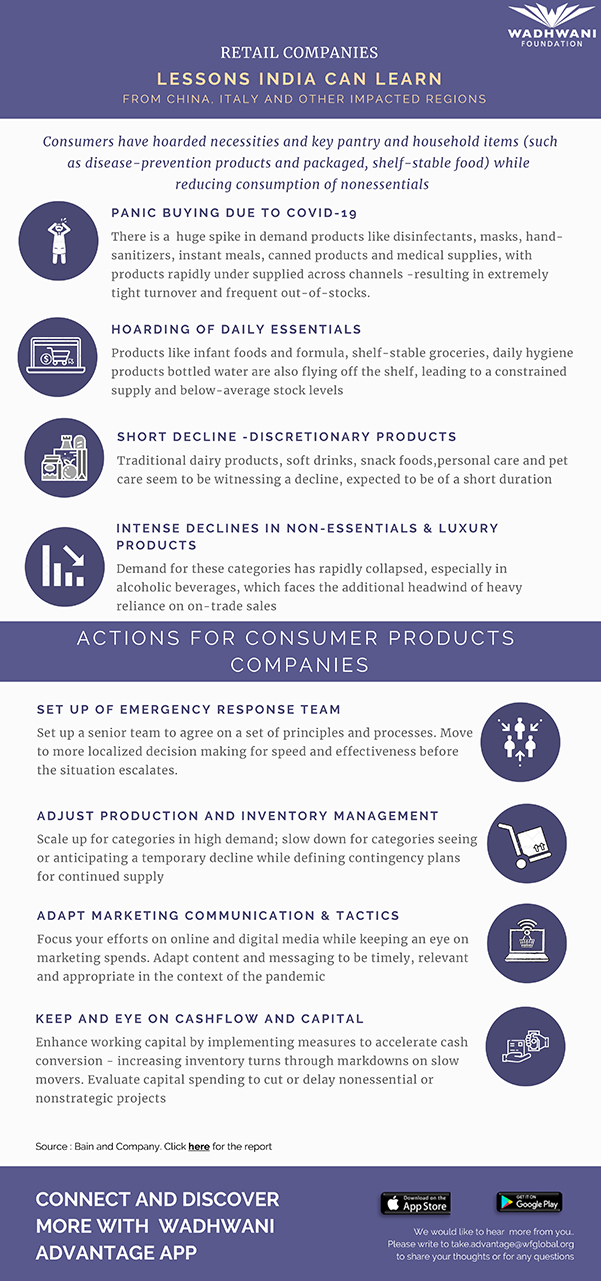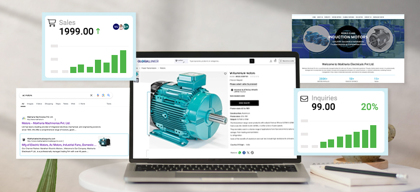Impact of COVID-19 on consumer goods businesses: Lessons India can learn from other affected regions

Business Development
243 week ago — 4 min read
The coronavirus outbreak has had a huge impact on the consumer goods segment. Consumers have hoarded necessities and key pantry and household items (such as disease-prevention products and packaged, shelf-stable food) while reducing consumption of non-essentials. As per a report by Bain and Company this is a defining moment for the leadership to respond to the unprecedented situation and strengthen their companies for the long run.
Below are some features of the crisis that are likely to affect consumer products companies in other countries as the virus expands globally.
-
Panic buying due to COVID-19
There is a huge spike in demand products like disinfectants, masks, hand sanitizers, instant meals, canned products and medical supplies, with products rapidly under supplied across channels -resulting in extremely tight turnover and frequent out-of-stocks.
-
Hoarding of essentials
Products like infant foods and formula, shelf-stable groceries, daily hygiene products bottled water are also flying off the shelf, leading to a constrained supply and below-average stock levels.
-
Short-term decline of discretionary products
Traditional dairy products, soft drinks, snack foods, personal care and pet care seem to be witnessing a decline, expected to be of a short duration.
-
Intense decline in non-essentials and luxury products
Demand for these categories has rapidly collapsed, especially in alcoholic beverages, which faces the additional headwind of heavy reliance on on-trade sales.
The coronavirus outbreak has had a huge impact on the consumer goods segment. This is a defining moment for the leadership to respond to the unprecedented situation and strengthen their companies for the long run.
Actions for consumer products companies
-
Set up of emergency response team
Set up a senior team to agree on a set of principles and processes. Move to more localized decision making for speed and effectiveness before the situation escalates.
-
Adjust production and inventory management
Scale up for categories in high demand; slow down for categories seeing or anticipating a temporary decline while defining contingency plans for continued supply.
-
Adapt marketing communication and tactics
Focus your efforts on online and digital media while keeping an eye on marketing spends. Adapt content and messaging to be timely, relevant and appropriate in the context of the pandemic.
-
Keep an eye on cashflow and capital
Enhance working capital by implementing measures to accelerate cash conversion - increasing inventory turns through markdowns on slow movers. Evaluate capital spending to cut or delay nonessential or nonstrategic projects.

Image source: shutterstock.com
To explore business opportunities, link with me by clicking on the 'Invite' button on my eBiz Card.
Disclaimer: The views and opinions expressed in this article are those of the author and do not necessarily reflect the views, official policy or position of GlobalLinker.
View Aarti 's profile
SME Inspirations
Other articles written by Aarti Bisla
Supply chain disruption: What firms can learn
242 week ago
Most read this week
Trending
Ecommerce 4 days ago













Comments
Please login or Register to join the discussion